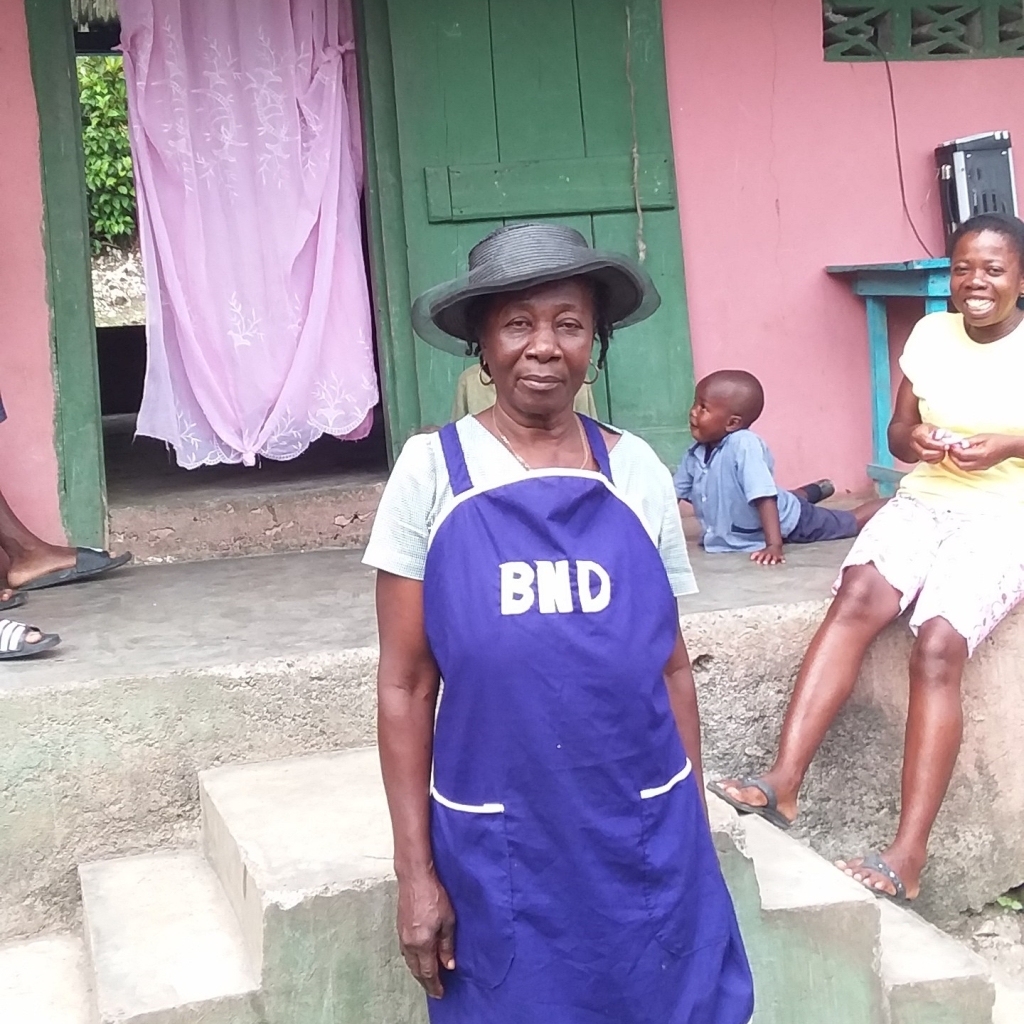I went back to Haiti.
Alone.
I touched down in Port-au-Prince little more than a week after rioters choked the streets with burning tires. Eventually, I rode a public bus down a snake-like mountain road to the isolated town of Jeremie—all with a guide who barely spoke English.
As a first-world traveler in a third-world country, I found it easy to feel like an intrepid adventurer—too easy. Sure, I’d left the comfort of my American hobbit-hole, but my “hardships”—rough roads, cold showers, no cell signal (gasp)—were specks compared to the hardships of many Haitians I met.
Let me introduce you to one.
Lenesa (LAY-nay-saw) Velny

To visit Lenesa, I rode on the back of a motorcycle from Jeremie to even-more-remote Moron (More-OH), then waded across a river to the farming community of Chameau (Sha-MOH).
Lenesa greeted me with a smile, radiating joy. One would hardly guess that she lost her house, livestock, and garden to Hurricane Matthew only two-and-a-half years before.
Now, though, her rebuilt home sported a shining tin roof, installed by IFOSuD in Matthew’s wake. Chatting people filled her yard and porch. Either she had a big family, or she must have been an important community figure.
Still, she had it rough. Other locals had told me about an ongoing drought that was stunting crops, but Lenesa had missed planting altogether. She told me she had located black bean seeds, but she was still working for the money she needed to buy them.
In America, farmers can get their seed on loan, but in Haiti, that’s much harder. Just putting a crop in the ground can be a challenge—and with infrequent and unpredictable rains, a harvest isn’t guaranteed.
I don’t know if I’d call Lenesa’s life an adventure, but it’s not for the faint of heart.
Living Adventure
As I trekked the rock path back to the river, I wondered what could help Lenesa and others in Chameau. Irrigation? Seed loans? Or could IFOSuD move into the area and begin training beneficiaries? Could I write a report or blog post? (Hmmmm.)
After I returned from Haiti and slid into the flow of “normal” life, my good intentions began to erode. Endless tasks, worries, and questions rushed for my attention. I came home from work tired some days.
But sometimes, helping others can mean interrupting our daily business, our comfortable routines, our endless worries. (Of course, sometimes helping others just means working that boring 9-5 job to feed the family. But I digress.)
The Good Samaritan in the famous parable probably had important places to go, pressing concerns to attend to. During his walk, he may have planned business moves or simply enjoyed some “me-time.”
By helping a wounded man on the roadside, he interrupted all that. He sacrificed valuable time, energy, and money for the unpleasant task of bandaging another man’s bloody body. He probably reached his destination exhausted.
The fellows who passed by the wounded man didn’t make any such sacrifices. They didn’t have to “rough it.”
But I bet the Good Samaritan had more adventure.
+ – + – +
P.S. Credit for the road trip photo goes to Margo Bergene, who took it during my first trip to Haiti. (I was too forgetful to take a picture of my bus ride during this second trip.)

Hi Ty. I really learned a lot from your write-up about your trip to Haiti. Some people have it so hard, yet they smile, laugh, welcome people into their homes and have a beautiful spirit about them. What a wonderful example they are to us all who have so may blessings and so much to be grateful for!! I love your reference to The Good Samaritan. So true and something to think about, especially in this day and age! Thanks for sending me your E-mails. I keep them. Take care. Love to you all. Grandma Pat
LikeLike